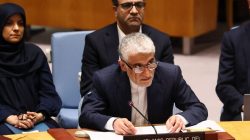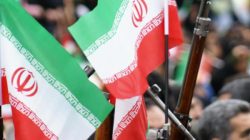Pakistan, May 31 – Geopolitics has no end points; it consists solely of continuations. This holds true for Pakistan’s choice to upgrade its diplomatic office in Kabul to an embassy status. Following several months of strained relations across their border and multiple demands from Islamabad for actions against the outlawed TTP, the administration is choosing diplomacy through interaction rather than isolation.
Foreign Minister Ishaq Dar announced this shift in the wake of a “very productive” April visit to Kabul. Nonetheless, it would be practical to read this move as what it is: not a political endorsement of the Taliban regime but an act of realpolitik under duress.
For decades, Pakistan pursued strategic depth in Afghanistan; a gamble that has not paid off. Ergo, sooner or later, there was little choice but to accept that it must deal with the government that exists, not the one it would prefer.
Tolong support kita ya,
Cukup klik ini aja: https://indonesiacrowd.com/support-bonus/
The Taliban are not retreating into hiding; instead, they are exercising control over their territory. While this governance is flawed—marked by oppressive regulations, limitations on women’s freedoms, and an absence of inclusive politics—they still hold power. Regional nations such as China, Russia, and the United Arab Emirates have already adapted to these circumstances.
What sets this development apart is the delicate balance it maintains. Similar to other UN member states, Pakistan has refrained from officially recognizing the Taliban government. This vagueness enables the focus on critical objectives: reducing transnational extremism, boosting official two-way commerce (which saw an increase of more than 27 percent during this financial year), and exploring land connections to Central Asian regions.
Once more, China’s significance in this diplomatic shift should not be underestimated. It was Beijing that enabled discussions among the foreign ministers from China, Pakistan, and Afghanistan. Furthermore, China has supported the expansion of the CPEC into Afghanistan—an expansive plan dependent on stable borders and collaboration with the Taliban. This strategic alignment provides Islamabad with economic diplomacy opportunities, puts pressure on Kabul, and reinforces Pakistan’s importance within the region.
Yet the dangers remain significant. Even at this moment.
Despite assertions from the Taliban denying support for the TTP, UN reports suggest the presence of numerous fighters within eastern Afghanistan. Although Pakistan’s incursions across the border were meant to serve as warnings, they have primarily resulted in increased diplomatic tensions instead of providing clear strategy. The Durand Line looms ominously over these discussions; an unaddressed map issue specter haunting relations between nations. Much like previous regimes, the current leadership of the Taliban also declines to acknowledge this boundary.
However, total disengagement would be far worse. It would deepen mistrust, embolden militants, and concede strategic space to rivals like India, which has quietly resumed high-level contacts with Kabul. Cautious, conditional engagement remains the only viable corridor for influence.
Islamabad must be clear-eyed: the Taliban will not become an extension of its security doctrine, but with sustained pressure and patient diplomacy, they might yet become a partner in managing shared threats. The road ahead is fraught with mistrust; in both diplomacy and warfare, one must negotiate not with friends but with adversaries. *







